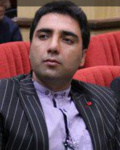| نویسندگان | Mohammad Yousefi,Mohsen Ramazani Doroh,Saeed Ilbeigi |
|---|
| همایش | چهاردهمین همایش بین المللی علوم ورزشی |
|---|
| تاریخ برگزاری همایش | 2024-03-06 |
|---|
| محل برگزاری همایش | تهران |
|---|
| شماره صفحات | 0-0 |
|---|
| نوع ارائه | سخنرانی |
|---|
| سطح همایش | داخلی |
|---|
چکیده مقاله
Abstract
Introduction: Low Back Pain (LBP) is one of the most common and debilitating musculoskeletal disorders.The aim of this study is to identify the compensatory movement strategies of the lower limb joints during gait in individuals with non-specific chronic low back pain using the mechanical energy method.
Material and Methods: 14 healthy subjects (age 27.46± 1.71 years) and 14 individuals with NSCLBP (age 28.38± 2.49 years) volunteered to participate in this semi-experimental research.Aleshinski’s method was used to compute concentric and eccentric mechanical energy expenditures (MEE) of ankle, knee, hip and low back joint during gait using inverse dynamic method in Matlab Software (Version 2017). MEE analyzed using the independent T tests (p≤0.05).
Results: Eccentric MEE in the ankle, hip and low back joints is significantly different between the two healthy groups and those with NSCLBP (P≤0.05) that means MEE of these joints was higher in the healthy group. However, no significant difference was observed in the eccentric MEE in the knee joint (P>0.05).
Discussion: In the ankle joint, the MEE in the healthy group is higher than the NSCLBP group, and due to the same pattern in the power chart, it can lead to performing the movement more easily in the healthy group. Healthy group in the mid-stance phase of gait cycle in the hip joint expended mechanical energy eccentrically, but in the NSCLBP group, this phase was performed concentrically in no energy transfer condition, which means the power must be generated by the muscles. Healthy group in the late-stance phase in the low back joint use eccentric MEE but NSCLBP group perform with concentric MEE. These differences, considering the external rotation of the hip in the mid-stance phase and the concentric contraction of the low back joint in the late-stance phase of gait cycle, which the thigh segment is in maximum hyperextension, could be due to the stiffness of the psoas major muscle in the NSCLBP group. Therefore, the need for therapists to pay attention to the conditions of the psoas major muscle and also to modify the gait pattern of people suffering from NSCLBP is recommended.
لینک ثابت مقاله

